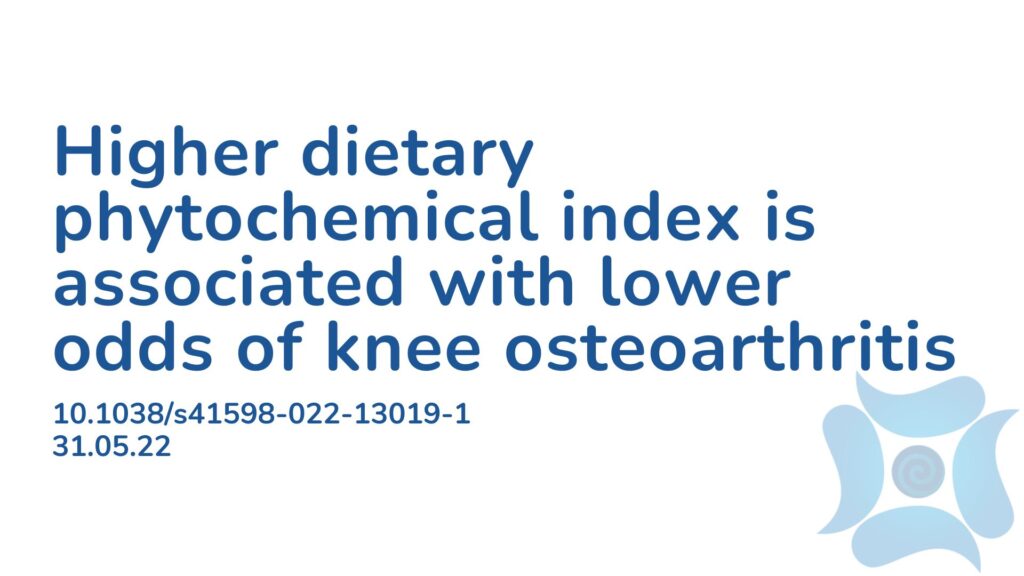Summary: The prevalence of osteoarthritis (OA) has rapidly increased globally and it is now the most common form of arthritis. OA is characterized by degeneration of the joint cartilages and can cause significant pain and disability among those impacted. The knee joint is one of the most common areas impacted by OA, referred to as knee osteoarthritis (KOA). Gender, age, diet, lifestyle and environmental factors all impact KOA. This paper aims to investigate the role of a diet rich in phytochemicals from whole grains, nuts, legumes, fruit and vegetables in KOA. In order to quantify the phytochemical content of the participant’s diet, the researchers used the dietary phytochemical index to define the percentage of daily energy intake from phytochemical-rich foods. The results showed that increasing the intake of foods with a high phytochemical content such as broccoli, collard greens, cabbage, cauliflower, kale and brussels sprouts, as well as whole grains, may help reduce the odds of KOA. Multiple papers have demonstrated these vegetables, also known as the Brassicaceae family, exhibit anti-inflammatory effects which may be the mechanism responsible for the reduction in KOA. Vegetables from the Brassicaceae family as well as whole grains are also a rich source of fiber and research confirms that high fiber diets are anti-inflammatory.
Abstract: Previous studies have shown that adherence to dietary patterns rich in plant-based foods may reduce the odds of osteoarthritis; however, limited data are available on the association of consumption of diets rich in phytochemicals and odds of knee osteoarthritis (KOA). In this case–control study conducted in Iran, we aimed to investigate whether a higher dietary phytochemical index (DPI) is associated with decreased odds of having KOA. A total of 124 cases aged 20–60 years diagnosed with bilateral primary KOA according to the American College of Rheumatology criteria and 124 controls frequency-matched on age, sex, and body mass index (BMI) were included in the study. A validated food frequency questionnaire (FFQ) was used to collect information on dietary intakes. To calculate DPI scores, the dietary energy derived from foods rich in phytochemicals (kcal) was divided by the participant’s total daily energy intake (kcal). Patients with KOA had lower intakes of dietary fiber (P = 0.004), vitamin A (P = 0.007), vitamin C (P = 0.001), and folate (P = 0.021) compared to controls. In the crude model, individuals in the third tertile of DPI had 65% lower odds of having KOA compared to those in the first tertile (OR 0.35, 95% CI 0.19 to 0.67, P-trend = 0.001). After adjustment for potential confounders, including age, sex, physical activity, smoking, and supplement use, this inverse association remained significant (OR 0.37, 95% CI 0.19 to 0.73, P-trend = 0.004). After further adjustment for BMI, this inverse association between DPI and odds of KOA also remained significant (OR 0.35, 95% CI 0.18 to 0.69, P-trend = 0.003). These findings suggest that adherence to a phytochemical-rich diet, as indicated by the increasing DPI score, is associated with lower odds of KOA.
Article Publication Date: 31.05.22
DOI: 10.1038/s41598-022-13019-1




